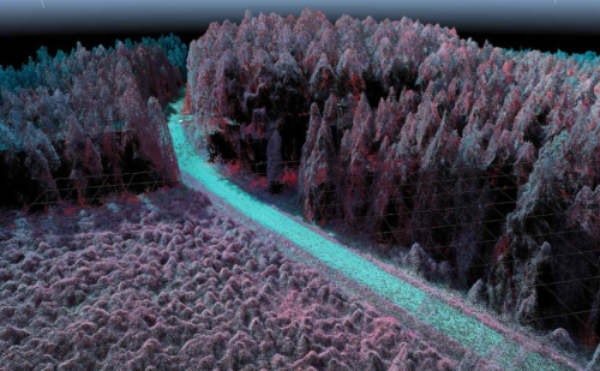You are viewing ARCHIVED content published online before January 20, 2025. Please note that this content is NOT UPDATED, and links may not work. Additionally, any previously issued diversity, equity, inclusion or gender-related guidance on this webpage should be considered rescinded.
Author: Robyn Broyles
The use of Unmanned Aircraft Systems (UAS) has grown exponentially in recent years for all types of applications. BIA's use of UAS is no exception. 2018 was the first year BIA began using UAS for wildfire and resource management projects.
This past year, the Branch invested $45,000 to launch its UAS program, purchasing eight small 3DR Solo quadcopters and carding six pilots throughout the Bureau. These systems can fly for 15-20 minutes and provide the Bureau with monitoring and surveying data. Employees can use this information for surveillance and intelligence purposes, trespass investigations, disaster or emergency assessments, or to detect early stress on vegetation and timber or resource damages from wildfires. UAS pilots can also assist the Bureau with inspecting roads, dams and other trust resources.
In 2018, pilots completed three missions for the Bureau, one wildland fire mission and two resource management missions.
BIA’s first UAS mission was to assist with collecting aerial imagery for the Pyramid Lake Paiute Burned Area Emergency Response Team. The UAS captured high resolution topographic video and photos used to help resource specialists evaluate the future risk of flooding and debris flow events that could impact the small Tribal community of Sutcliffe, Nevada. Information was also used to assist the Paiute Tribe with identifying long-term affects to their fishery, roads, irrigation reservoir, drainage systems and watershed. This interagency effort resulted in a true measurable benefit to the Tribe; providing them with details they used to develop a response plan based on the current and expected future conditions.
Central California Agency also used UAS to provide supporting evidence in a 40-year trespass case. The BIA solicitor used the aerial imagery to determine accurate structural impacts to trust land. The outcome of which created minimal public controversy.
Northern California Agency also used UAS for the first time to examine the geomorphology of a relatively inaccessible watershed called Hat Creek. The UAS was used to inspect creek channel runoff and flooding taking place onto trust and other federal lands. The imagery revealed flooding was caused by natural and human occurrences that were impacting an important diversion dam. The area was surveyed within a few hours and provided real-time and cost effective data to line officers that would have otherwise taken days to complete.
Overall, in 2018, BIA conducted three UAS missions, logging more than 80 flight hours in support of trust lands.
For Immediate Release: May 1, 2019


